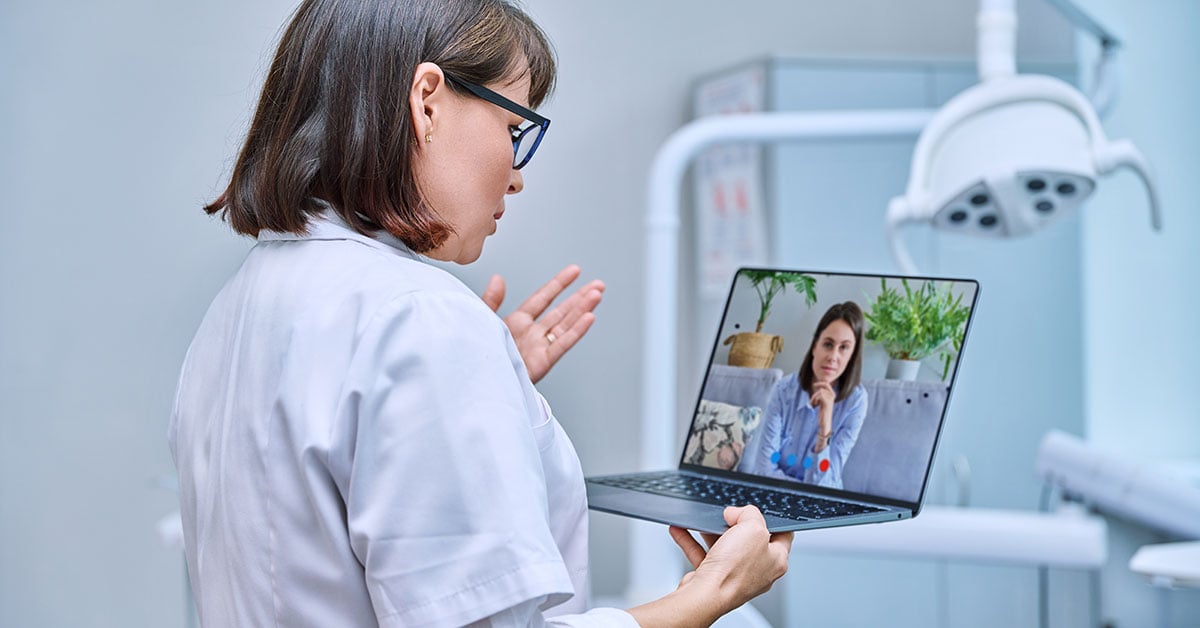Like books and school supplies, a student’s health is essential to their academic life. Resources matter to both. That’s why school-based mobile dental programs provide an important healthcare essential.
But can’t most kids briefly step away from a school day to see the dentist? Not as many as you think. In fact, an overwhelming number of students lack the access or drive to seek dental care.
The challenge is real
A number of factors impact dental care access for school-aged children. Each come with their own set of realities that contribute to a decline in their oral health.
Location challenges
Rural communities can easily miss out on even the most basic dental services. “Dental deserts” (as they’re called) in rural areas make dentistry somewhat practically inaccessible.
Income challenges
Families with limited or low income have to prioritize their expenses. Dental care can easily fall to the bottom of their family spending priorities. Even families with a good income stream might not want to take time away from their jobs for a child’s dental appointment during school and/or work hours.
Insurance challenges
Not all employers provide healthcare coverage - including a dental provision. And even though some children qualify for Medicaid until they’re age 18 a provider might avoid accepting it due to low reimbursement rates.
Health is the real issue
Tooth decay is the second most common disease among children. It is second to asthma.
As a dental professional, you’re aware of the devastating effect of decay on a child’s teeth. Early prevention and treatment can make a significant difference.
A prevention mindset has led some schools to upgrade their dental health education. Talking about oral hygiene, healthy eating, etc. is a start.
But the real difference will be made when actual dentistry is made available to them…where they are - at school.

Mobile dentistry is a real solution for school-based care
Mobile dentistry reframes school-based dental care access. Mobility is the linchpin for for the care gaps faced by school-aged patients and their families.
Picture this…
A mobile dental clinic - equipped and capable to provide basic dental services.
- Examination and diagnostic solutions
- Sterilization equipment to assure patient safety
- Computer technology for processing essential information and care protocols
Or…
A mobile dental service unit - designed around providing routine, on-site dental care.
- Initial dental examinations and x-rays
- Teeth cleanings and preventive services
- Fillings and sealants
- Disease screenings (tooth decay, periodontal disease, and oral cancer)
These two models form the basic foundation of mobile dentistry. Either can be tailored for school-based usage.
A mobile dentistry strategy for school-based care
Overall, mobile dentistry provides you a way to serve your community. Or more specifically those areas that are location-hindered, such as a remote, rural locations.
A few proven strategies can help assure your success. This useful perspective is applicable to most mobile dentistry initiatives too.
Align your plan(s) with established guidelines for mobile dentistry
Proper planning should go without saying. Though your focus (in this context) is a school-based model it’s vital to outline the services you’ll provide.
- Review and comply with regulations that apply to general dentistry services and dental hygiene services
- Clarify any fees that could apply within your state
- Implement on-site security protocols for your patient records
Enhance your mobile dentistry environment with appropriate technology
Your school-based mobile clinic will of course be a smaller footprint than a standard, fixed facility. Portability is required without compromising on care quality.
- Digital technology that reduces paper use and provides easy access to patient and related health information
- Virtual capabilities through a teledentistry platform can help with communication beyond your remote location
- Keep thorough records of all mobile dentistry provisions
Promote your mobile dentistry services through professional and community advocates
It’s a good idea to brief your local dental colleagues about your services. This helps alleviate any potential conflicts of interest. Aim for cooperation with the local dental community as well as other community agencies.
- Partner with state and local health organizations and agencies.
- Connect with local school districts. Engage their school nurse(s) and other in-house health advocates.
- Request communication to parents about your mobile dentistry services. Inform them about all details concerning permission, follow-up, and mobile care protocols.
Get informed about mobile dentistry…and the technology that supports it
If you’re considering the mobile or portable dentistry model you might find some additional useful insight in the following resources:
An Overview and Guide to Mobile Dentistry
Mobile Dental Delivery Explained
Mobile dentistry services on platform such as Teledentix improves overall care delivery. Plus the virtual technology for remote dentistry is built-into the Teledentix software.
Get a personalized demo of Teledentix!



